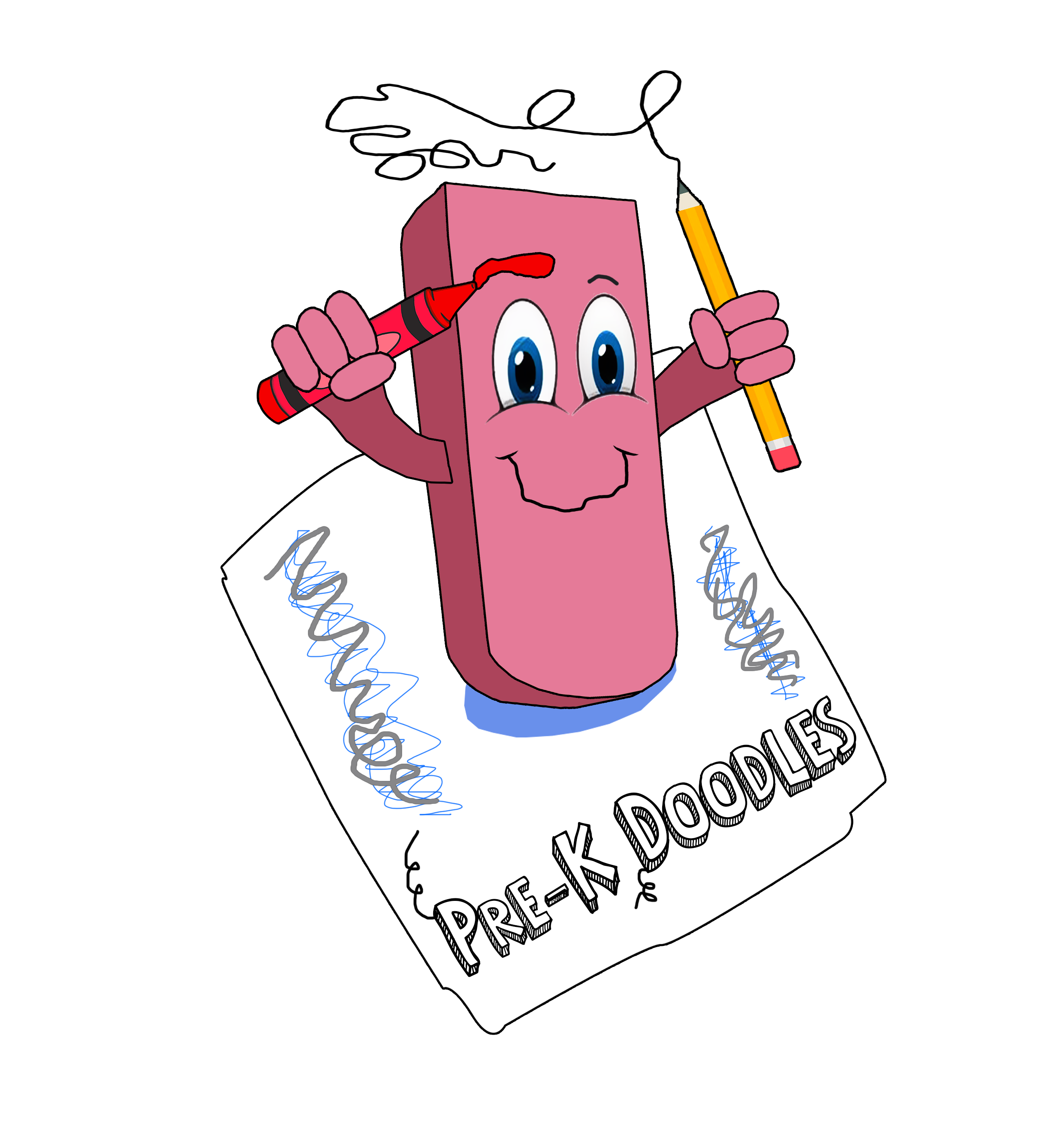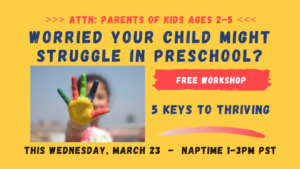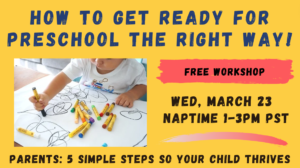my preschool mission
My Mission
As a former teacher, I help the parents of our current little ones prepare to thrive in Preschool, Kindergarten (and school beyond) by understanding the key role scribbling and drawing plays in child development!
I love how little children get fully engaged with “art” materials. As messy as it can be, this is actually preparing them for school. You give supplies — or they find them, like the kids in this video — and they’ll take care of the rest! Enjoy a good laugh with this video of small kids making art on themselves.
The Big 4 + 1
5 Keys to help your child thrive
The Big Five: Talk Out Loud – Read Aloud Daily – Serve Nutritious Food – Play + Draw
Actually, I’ve renamed these essential keys the “Big Five.” There is already something out there called the Big Four. You may have even seen it on billboards in one form or another. However, as a teacher, I felt a vitally important Key was left out. DRAWING. It’s alluded to in the Play component (#4), but there’s so much more to it than that.
It’s also glossed over in the CDC guidelines for child development, which I’ve altered on a graphic further down the page to reflect this.
Five Things in Five Years
These Five essential things must be done at home during the first five years of brain development. These “Five Things in Five Years” are EASY to do, yet easy not to do. The biggest one missing is scribbling and drawing because many kids are not coloring for hours on paper anymore. What’s in their little hands instead? Technology.
Technology is driving our baby generation, too! It’s not an equivalent at this age. And because I’ve experienced what’s happened at school with each successive generation, I know I need to sound an alarm for parents before their kids arrive at school. This is something easy to be doing at home!
Drawing is academic work for little kids
Scribbling, drawing, and coloring got generations ready for Kindergarten in our early years. It was a natural development. Now it’s so obvious when children don’t have this important experience. Breaks my heart watching scores of little kids struggle because of this, even getting labeled as “special needs.” If it’s lack of experience, school can’t make up for it! Drawing is “academic” preparation for small kids. Tech is not.
Today’s Kindergarten is far more demanding now for small children. For parents and early childhood teachers, I’ve outlined how drawing plays a big part in brain development and school readiness in my ebook available on site here: “Getting Ready for Preschool and Kindergarten.”
Children need to have drawn their way to a certain stage to be ready to read and write. Otherwise, it’ a very frustrating experience in school trying to put the “cart before the horse” — before the child is naturally ready. Age has very little to do with it; experience with a crayon does!
The Preschool Book
Buy eBook Now
The second way I’m helping parents know what to do is through my ebook of the same name as the workshop. BTW, that’s my granddaughter on the cover! My long observation and understanding of how a child develops through drawing covers the span of the early years through high school.
You can read more on the Buy the Book Tab!
Why is scribbling/drawing so important?
Current Kindergarten curriculum expects your child to be ready to write sentences. Writing requires patience and stamina. Yet tech is usurping the years needed for little humans to work naturally through the drawing stages. They need to be at a certain stage of development by the time they enter their first school experience. They get there by making marks which develop over several years into pictures, which grows their thinking in tandem.
Children take charge of this process when given time and materials. You didn’t teach them to walk or grow their teeth; equally, you don’t teach children to scribble, which leads them to make the leap that symbols stand for ideas. That takes lots of practice at their own pace!
School can’t make up what’s not accomplished from ages 2-5
Parents may not realize that teachers can’t go back to make this up for you — school is about forward momentum. There’s a very full state curriculum to deliver to your child. To children who aren’t proficient with a pencil, school then feels hard, your child struggles, and may fall behind. And then instead of addressing what your child didn’t receive drawing-wise, the wrong pressure is applied to the symptoms.
It has made me absolutely furious on the child’s behalf!
Since parents and caregivers are a child’s first teachers, I need to call your attention to this important activity. Getting ready for Preschool and Kindergarten the right way is simple, natural, and cheap.
The key to school success: make scribbling and doodling a daily habit!
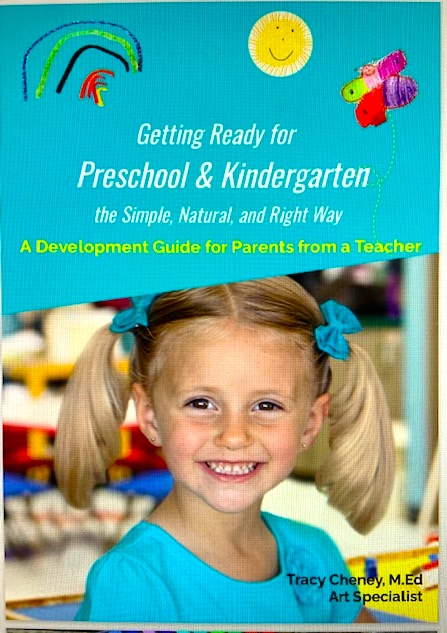
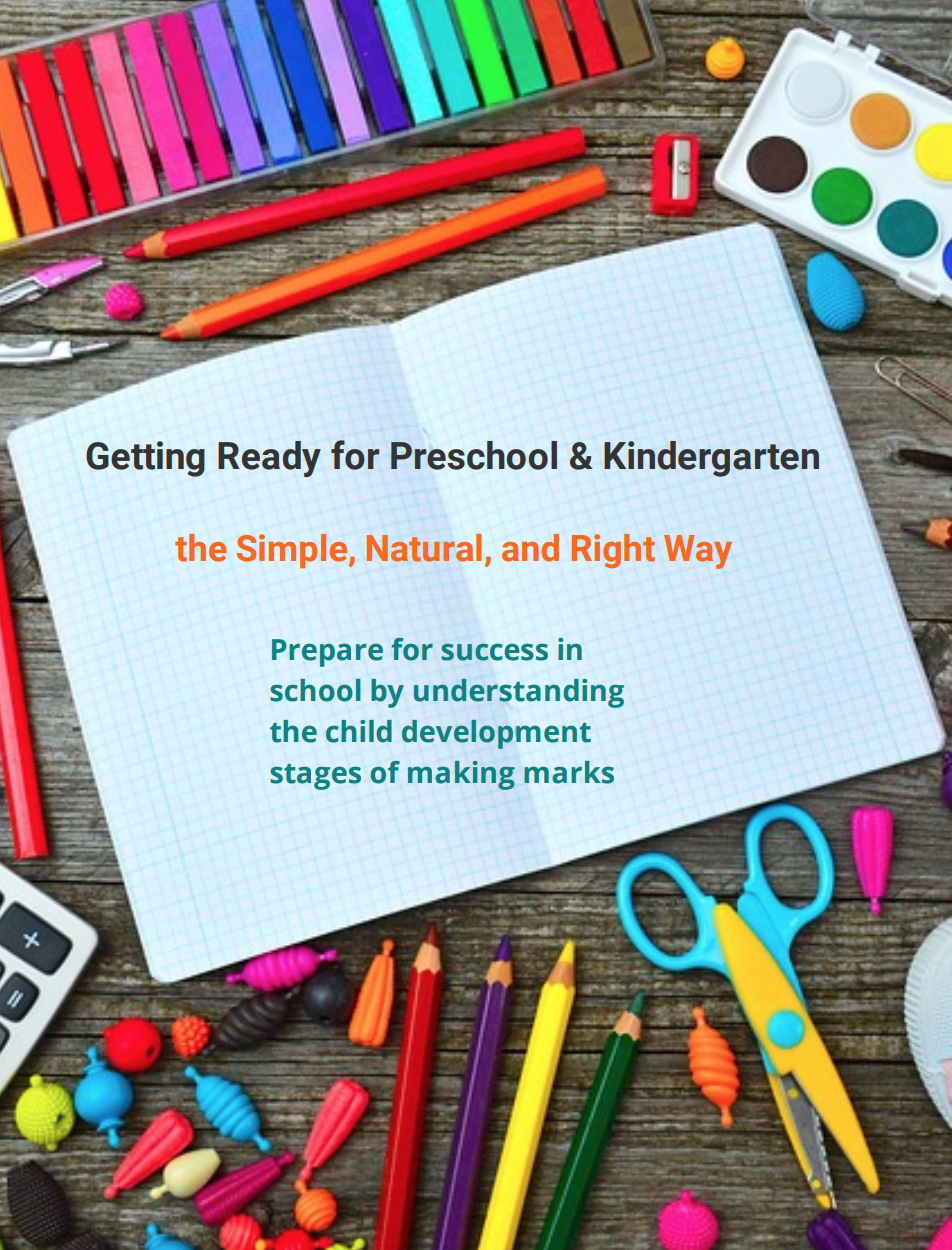
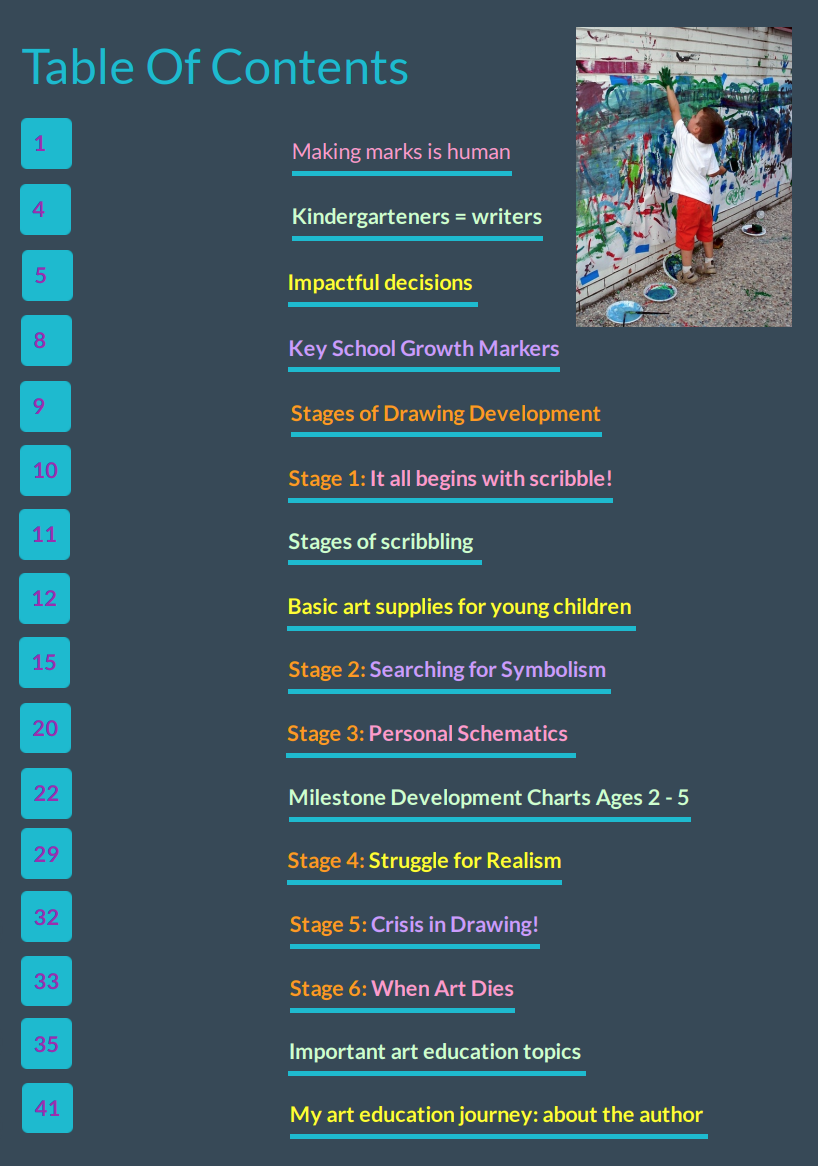
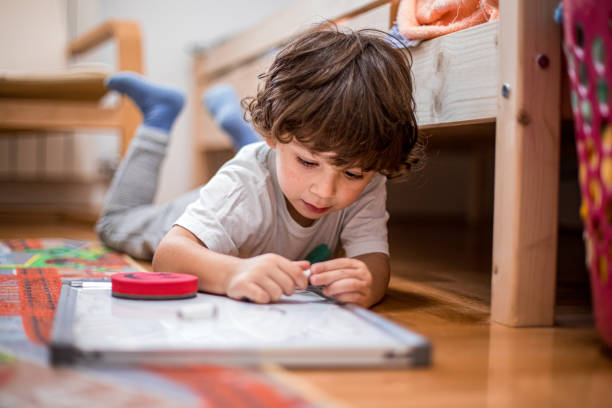
All you have to provide are the materials. Small children will do the rest, drawing their way to each new stage of development! They must be at stage two or three of drawing to be ready for Kindergarten. That means they’ve evolved past the three stages of scribbling to drawing people with six body parts. It demonstrates they have been observing the world around them and worked to be able to depict it. It’s amazing progress for a little human!
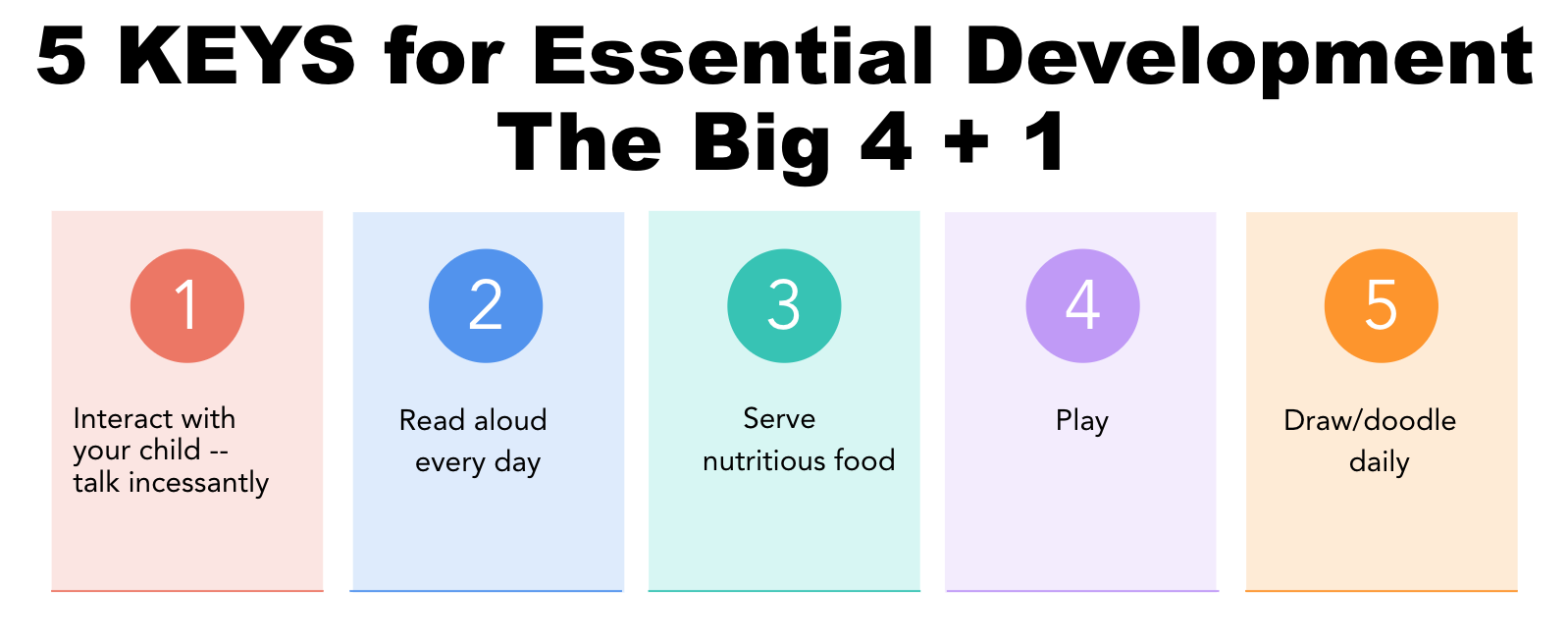
These 5 Keys help your child thrive in school: “5 things in 5 years!”
1
UInteracting with your child means talking, explaining, describing, naming so they hear language. Having close interaction and eye contact with the meaningful adults in their lives = thriving. Even newborns communicate back to you. Music is powerful, too.
2
Reading aloud
to your child every day provides an early introduction to literacy skills. Children understand how books “work.” They pick up the cadence of reading, vocabulary, inflection, learn to “read” the artwork during this close cuddle time.
3
Serving nutritious
food supports your child’s brain and body’s unbelievably rapid growth during these years. By age 5, your child’s brain develops to 90% of its’ size! Introducing a wide variety of foods now, limiting fruit juice and sugar, pays off!
4
Play, play. play! Without technology! Children need to make their own decisions, develop spatial intelligence, interact with others, make sense of their real world, create their own worlds — not the artificial flat world of video programs made by adults.
5
Drawing/doodling every
day is how children learn to control a writing tool to make meaningful marks and develop their thinking simultaneously. You child needs to do this on their own. It’s a long process until they make the leap that symbols stand for ideas.
Universal Preschool Education
We don’t have this yet??
I truly believed we were finally going to see legislation passed by Congress in favor of universal PK education. I was stunned that this was forced out in order to pass the Infrastructure bill by one senator, Joe Manchin (D) of West Virgina, and Republicans refusing school access. How could these few individuals have the power to deny millions of small American children access to preschool, but trillions are spent on war, and weapon give-aways?
It’s been over a century since Kindergarten was seen as a necessary component of our education system. And once K was structured into First Grade in the mid-2000s, many children need that preschool boost to succeed in the early primary grades. The blame is pointed at schools, when it’s the states who device curriculum and standards. The money needs to be spent on children having age-appropriate activities to succeed.
We know what kids need
Schools can’t overcome the situation entirely when kids aren’t ready. Well, as an experienced teacher, I’m not giving up on my support for the availability of preschool for parents who want it!
I’m one of the few teachers in a school who works closely with every student through their entire elementary school life from start to finish. From personal experience of teaching thousands of kids, and watching little five-year-olds flunk because they couldn’t write, I see how very important his preschool boost is.
By the way, I’ve watched Kindergarten become the most pressured grade of all! Again, it feels pressured and hard when children aren’t ready for what the adults devising the standards think they should be able to do.
Preschool Curriculum
When looking for a preschool, choose one that provides regular time for art-making and drawing. That is academic work for small children. There has been a tendency to make these little ones “write.” But this is the order of how children learn: Draw. Read. Write.
Please, don’t force it artificially. When kids have enough drawing practice, they’ll naturally be ready to tackle what comes next. Drawing is their first academic practice.
This Kindergarten “Report Card” was posted on “Simple K-12 TeachersEverywhere” page on FB. I assure you, this is not what a K report looks like today. This would be today’s PK assessment. A Kindergarten teacher assumes your child has experience with these concepts, arriving ready to read and write. It may not be age-appropriate, as scores of teachers will tell you. But that’s what has been mandated. Block stations, dress-up boxes, play kitchens were tossed out of K classrooms when they became mini-first grade. Make sure they are prominent in preschool!
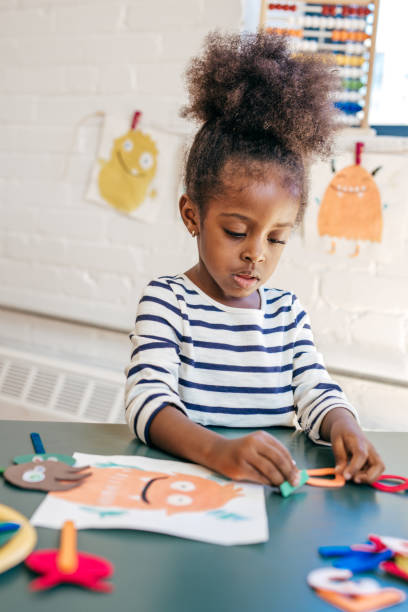
A Kindergarten report card from 1954.
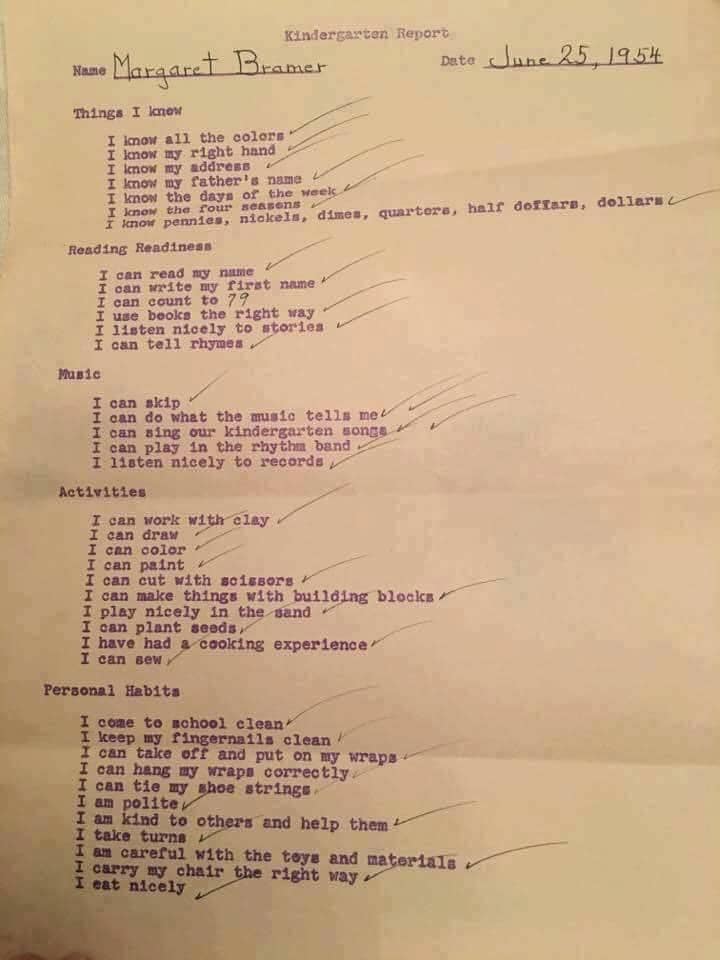
Online Workshops for Parents/Caregivers
Register for the Next Workshops For Moms Here
In the meantime, I support parents, grandparents, and caregivers with a FREE online workshop called “Don’t Worry! How to Get Ready for Preschool and Kindergarten the Easy, Simple, and Right Way.” I’ve teamed up with other educators and coaches to support you through Workshops for Moms. Contact me through the link if you’d like a schedule and topics — all free!
How did this develop? After all the Zoom teaching and parent/teacher conferences held during the pandemic, I realized there was a parent group we can now reach: You — you parents with small children at home ages 2-5! Traditionally, teachers don’t interact with you until your child is attending school. But that could be too late. I saw this as a way to support you now.
Weekly online support for parents
Even if you’ve read lots of parenting books, it doesn’t mean you have all the knowledge of what should be happening during those first five years on the planet – when it comes to formal schooling, anyway. So, it’s helpful to hear from teachers and coaches.
And here’s the stark reality: school cannot make up what’s been missed during those critical years of brain development. Schools have state mandates and curriculum to fulfill – the kids sink or swim on their own.
Occasionally I’d get to speak to parents of children months before they entered our nursery or preschool programs. My message was always the same – scribble! Scribbling is your small child’s work! Instead of engaging in only a brief conversation, now I can explain all of this in the workshop. It’s such exciting work you parents get to do before you make those applications for a preschool slot. Your child will feel prepared. And that will make you so happy.
Past Workshops
Join Us On Facebook
YouTube Channel – “Pre-K Doodles”
*Coming Soon*
My goal is simple. As soon as a little child picks up a pencil out of curiosity and makes those first thrilling marks, here’s what I want you to do: devote at least 10 minutes every day to this activity. Your toddler has a lot of drawing work to do to get ready for preschool – which they don’t consider work at all. They have to – want to – do it themselves. Of course it feels fun! It’s being human. But the impact on his/her school experience will be profound. All kids need are crayons and lots of big paper.
There are really some great sites online featuring talented teachers and parents providing PK and K art activities. I hope you use them. There are also people reading stories aloud to kids online. My specific desire is to combine both activities for the really small ones in a future YouTube video series, featuring Mr. Doodly here. If you’d like to download a black and white version of Mr. Doodly for your child to color, go to the “Good Stuff” tab.
